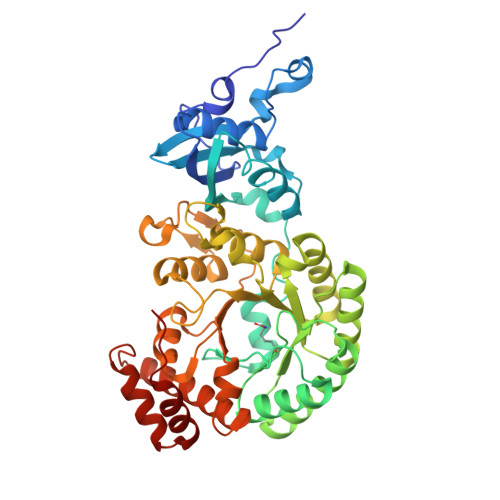Layered entrenchment maintains essentiality in the evolution of Form I Rubisco complexes.
Schulz, L., Zarzycki, J., Steinchen, W., Hochberg, G.K.A., Erb, T.J.(2025) EMBO J 44: 269-280
- PubMed: 39558108
- DOI: https://doi.org/10.1038/s44318-024-00311-1
- Primary Citation of Related Structures:
8QMV, 8QMW - PubMed Abstract:
Protein complexes composed of strictly essential subunits are abundant in nature and often arise through the gradual complexification of ancestral precursor proteins. Essentiality can arise through the accumulation of changes that are tolerated in the complex state but would be deleterious for the standalone complex components. While this theoretical framework to explain how essentiality arises has been proposed long ago, it is unclear which factors cause essentiality to persist over evolutionary timescales. In this work we show that the central enzyme of photosynthesis, ribulose-1,5-bisphosphate carboxylase/oxygenase (Rubisco), can easily start to depend on a newly recruited interaction partner through multiple, genetically distinct mechanisms that affect stability, solubility, and catalysis. We demonstrate that layering multiple mechanisms of essentiality can lead to its persistence, even if any given mechanism reverts. More broadly, our work highlights that new interaction partners can drastically re-shape which substitutions are tolerated in the proteins they are recruited into. This can lead to the evolution of multilayered essentiality through the exploration of areas of sequence space that are only accessible in the complex state.
Organizational Affiliation:
Department of Biochemistry & Synthetic Metabolism, Max Planck Institute for Terrestrial Microbiology, Karl-von-Frisch Straße 10, 35043, Marburg, Germany.



















